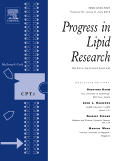
BIOCHIMICA ET BIOPHYSICA ACTA-BIOMEMBRANES
Scope & Guideline
Connecting Science and Discovery in Biophysics
Introduction
Aims and Scopes
- Membrane Structure and Dynamics:
Research on the molecular structure of membranes, including lipid bilayers and their interactions with proteins and other biomolecules. This area covers studies on membrane fluidity, phase behavior, and the impact of various factors such as temperature, pressure, and composition on membrane properties. - Protein-Membrane Interactions:
Investigations into how membrane proteins interact with lipid bilayers, including studies on transmembrane domains, protein folding, and dynamics. This includes research on ion channels, transporters, and membrane receptors, highlighting their functional roles in cellular processes. - Lipid Biochemistry:
Exploration of the biochemical properties of lipids and their roles in membrane formation, stability, and function. This includes studies on lipid composition, modifications, and the impact of lipid rafts on signaling and membrane dynamics. - Biophysical Characterization Techniques:
Application of advanced biophysical methods such as NMR, EPR, and molecular dynamics simulations to study membrane systems. This area emphasizes the development and utilization of innovative techniques to probe membrane structure and dynamics. - Drug-Membrane Interactions:
Research on how drugs and antimicrobial compounds interact with biological membranes, affecting their properties and functions. This includes studies on drug delivery systems, membrane permeability, and the mechanisms of action of antimicrobial agents.
Trending and Emerging
- Computational Modeling and Simulations:
There is a growing trend towards utilizing computational approaches, such as molecular dynamics simulations, to study membrane dynamics and interactions. These methods provide insights into the behavior of membranes at the molecular level and help predict the effects of various conditions on membrane properties. - Nanostructured Membrane Systems:
Research on nanostructured membranes and their applications in drug delivery and biosensing is on the rise. This includes studies on lipid nanoparticles, liposomes, and hybrid systems that offer enhanced functionality and stability. - Antimicrobial Peptides and Membrane Interactions:
The investigation of antimicrobial peptides and their mechanisms of action against bacterial membranes is increasingly prominent. This trend highlights the need for new therapeutic strategies to combat antibiotic resistance. - Lipid Rafts and Membrane Microdomains:
An increased focus on the role of lipid rafts and membrane microdomains in cellular signaling and function reflects a deeper understanding of membrane organization and its implications for health and disease. - Biomimetic Membrane Models:
There is a growing interest in developing biomimetic membranes that accurately replicate the complexity of biological membranes. These models are essential for studying drug interactions, membrane protein function, and disease mechanisms.
Declining or Waning
- Traditional Biochemical Assays:
There has been a noticeable decrease in the publication of studies relying solely on traditional biochemical assays for membrane characterization, as newer techniques such as molecular dynamics simulations and advanced spectroscopies gain traction. - Static Membrane Models:
Research utilizing static or simplified membrane models has become less common as the field moves towards more dynamic and physiologically relevant systems that better mimic cellular environments. - Focus on Single Molecule Studies:
The emphasis on single molecule studies, while still important, has waned in favor of holistic approaches that consider the complex interactions within membrane systems, reflecting a broader perspective in membrane biology.
Similar Journals

JOURNAL OF MEMBRANE BIOLOGY
Charting New Territories in Membrane ResearchWelcome to the Journal of Membrane Biology, a premier publication dedicated to advancing our understanding of the complex roles membranes play in biological systems. Published by Springer, this journal features research articles, reviews, and communications on a broad range of topics related to membrane biology, including biomolecular interactions, transport mechanisms, and physiological responses. With an ISSN of 0022-2631 and E-ISSN 1432-1424, the journal has been a cornerstone in the field since its inception in 1969 and continues to thrive as it looks towards 2024. Ranked in the second quartile (Q2) for Biophysics and Physiology, and third quartile (Q3) in Cell Biology, it showcases impactful research that embodies the spirit of scientific inquiry and innovation. Although currently not an Open Access journal, it remains easily accessible to researchers, professionals, and students eager to delve into the dynamic world of membrane studies. As the understanding of membrane dynamics expands, so does its relevance in areas such as drug development and cellular engineering, making the Journal of Membrane Biology an essential resource for those at the forefront of these critical scientific advancements.

Membranes and Membrane Technologies
Fostering Collaboration in Membrane ResearchMembranes and Membrane Technologies is an innovative journal dedicated to advancing the fields of chemical engineering, chemistry, and materials science through the exploration of membrane science and technology. Published by PLEIADES PUBLISHING INC, this journal offers vital insights into the efficient design, synthesis, and application of membranes across diverse industries, aiming to enhance water treatment, energy generation, and various separation processes. With an ISSN of 2517-7516 and an E-ISSN of 2517-7524, the journal is recognized for its impactful contributions, holding a Q3 category ranking in multiple fields as of 2023. Researchers and professionals will find a wealth of open-access articles that promote the sharing of knowledge and foster collaboration in this rapidly evolving domain. As it converges its mission from 2019 to 2024, Membranes and Membrane Technologies remains an essential resource for those committed to pushing the frontiers of membrane research and application.

BIOCHIMICA ET BIOPHYSICA ACTA-MOLECULAR AND CELL BIOLOGY OF LIPIDS
Pioneering Discoveries in Lipid FunctionalityBIOCHIMICA ET BIOPHYSICA ACTA-MOLECULAR AND CELL BIOLOGY OF LIPIDS, published by Elsevier, is a leading academic journal that focuses on advancing the field of lipid biology. With an ISSN of 1388-1981 and an E-ISSN of 1879-2618, this journal has established itself as an essential resource for researchers, professionals, and students interested in cell and molecular biology, particularly regarding lipid interactions and functions. The journal boasts an impressive impact factor, standing in the top quartiles of its categories—Q1 in Molecular Biology and Q2 in Cell Biology. As part of the vibrant academic landscape of the Netherlands, it supports both traditional and open access publication models, ensuring that vital research is accessible to a global audience. The converged years from 1998 to 2025 mark its sustained commitment to quality and relevance in the fast-evolving field of lipid research. With a strong ranking in Scopus and a percentile in the 80th range in both Molecular Biology and Cell Biology, this journal continues to be a pivotal platform for scholarly communication and innovation in lipid-related research.

CHEMISTRY AND PHYSICS OF LIPIDS
Connecting biochemistry and molecular biology through lipids.Chemistry and Physics of Lipids is a prestigious and influential journal dedicated to advancing the understanding of lipid chemistry and biophysics. Published by Elsevier Ireland Ltd, it serves as a vital resource for researchers and professionals in the fields of biochemistry, cell biology, and molecular biology. The journal has a strong standing within the academic community, as reflected in its 2023 Scopus rankings, where it places in the 82nd percentile for organic chemistry and maintains significant positions in various biochemistry subfields. Spanning from 1966 to 2024, it fosters a comprehensive discourse on lipid-related research and innovation. As a renowned publication in the Q2 and Q3 quartiles across several categories, it supports the dissemination of high-quality research aimed at elucidating lipid functions and their implications in health and disease. Researchers and students alike will find this journal invaluable for staying updated with the latest developments and trends in lipid research.

BIOPHYSICAL JOURNAL
Shaping the future of biophysics through rigorous inquiry.BIOPHYSICAL JOURNAL, published by CELL PRESS, is a leading interdisciplinary platform dedicated to advancing the field of biophysics. With an ISSN of 0006-3495 and an E-ISSN of 1542-0086, this esteemed journal has garnered a prestigious position within the academic community, reflected in its ranking as Q1 in Biophysics for the year 2023. Its Scopus rank of #44/152 in the category of Biochemistry, Genetics, and Molecular Biology showcases its significant influence, with a notable percentile of 71st. Since its inception in 1960, the journal has published cutting-edge research that explores the quantitative and qualitative aspects of biological phenomena, making it essential for researchers, professionals, and students in the field. While the journal operates under a subscription model, its rigorous peer-review process ensures the highest quality of published work, contributing to groundbreaking discoveries and innovations that shape the future of biophysics. For more information or to explore the latest research, please visit the journal’s platform.

Journal of Membrane Science Letters
Connecting Researchers in Membrane ScienceJournal of Membrane Science Letters, published by ELSEVIER, is a premier open-access journal dedicated to advancing knowledge in the fields of membrane science and technology. With an ISSN of 2772-4212, the journal aims to disseminate high-quality research papers, reviews, and short communications that focus on innovative materials, processes, and applications associated with membrane systems. Since its launch in 2021, the journal has quickly established itself as a credible source of information within the scientific community, reflected in its robust quartile rankings: Q2 in Biochemistry and Filtration and Separation, and Q1 in both Materials Science (miscellaneous) and Physical and Theoretical Chemistry. The journal is committed to fostering collaborative research and interdisciplinary studies while providing an accessible platform for researchers and professionals. Its impact factor and growing citation index underscore the journal’s significance in shaping the future of membrane technology and its applications. Located in Amsterdam, Netherlands, the Journal of Membrane Science Letters is a vital resource for those at the forefront of scientific discovery and innovation.

BIOLOGICHESKIE MEMBRANY
Connecting Researchers through Membrane ScienceBIOLOGICHESKIE MEMBRANY is a critical journal in the field of Cell Biology and Molecular Biology, published by MEZHDUNARODNAYA KNIGA in the Russian Federation. With an ISSN of 0233-4755, this journal has been serving the academic community since 1996 and continues to publish cutting-edge research that advances our understanding of biological membranes and their functions. Despite being classified in Q4 quartiles for both Cell and Molecular Biology in the 2023 category rankings, the journal presents a unique platform for emerging research within these pivotal areas. Researchers, professionals, and students alike will find valuable insights in its pages as it seeks to foster a collaborative environment that encourages knowledge sharing. Although currently not available as an open-access journal, it remains an essential resource for those looking to deepen their knowledge and contribute to ongoing discussions in the biological sciences. The journal’s commitment to publishing quality research is underscored by its continuous coverage until 2024, making it a sustained reference in the field.

Lipids in Health and Disease
Pioneering insights into lipids for disease prevention.Lipids in Health and Disease, published by BMC, stands as a leading open-access journal dedicated to advancing the understanding of lipid metabolism and its implications for health and disease. Since its inception in 2002, this journal has fostered accessibility to cutting-edge research, ensuring that knowledge in this vital field is disseminated widely to researchers, clinicians, and students worldwide. With a commendable Q1 ranking in multiple categories including Clinical Biochemistry and Endocrinology, Diabetes and Metabolism, it appeals to a diverse readership, positioning itself at the forefront of research in biochemistry and medicine. It boasts an impressive Scopus rank, where it excels in areas such as Endocrinology, Diabetes and Metabolism and Clinical Biochemistry, making it an essential resource for those looking to deepen their understanding of lipid biology and its clinical applications. Researchers can share and access findings that have significant implications for public health and disease prevention, emphasizing the journal's commitment to fostering innovation and collaboration in the scientific community.

PROGRESS IN LIPID RESEARCH
Transforming Understanding of Lipid DynamicsProgress in Lipid Research, published by Pergamon-Elsevier Science Ltd, is a leading scientific journal dedicated to advancing the understanding of lipid biology and its implications for human health. With an impressive impact factor, it ranks in the Q1 quartile in both Biochemistry and Cell Biology as of 2023, reflecting its vital role in disseminating high-quality research. Covering a wide scope of topics from lipid metabolism to cell signaling pathways, the journal serves as a key resource for researchers, professionals, and students alike, striving to elucidate the complex functions of lipids in various biological systems. With publication converging since 1978 and extending to 2024, Progress in Lipid Research continues to provide innovative insights and foster collaboration within the scientific community, solidifying its reputation as an essential platform for lipid research.

JOURNAL OF BIOENERGETICS AND BIOMEMBRANES
Innovating Insights into Membrane Dynamics and FunctionJOURNAL OF BIOENERGETICS AND BIOMEMBRANES, published by SPRINGER/PLENUM PUBLISHERS, is a leading journal dedicated to the study of bioenergetics and biomembranes, covering essential topics such as cellular energy transformation and membrane dynamics. Since its inception in 1976, the journal has developed a robust reputation within the scientific community, currently holding a Q3 ranking in Cell Biology and a Q2 ranking in Physiology for 2023. Boasting a prestigious Scopus Rank in both Biochemistry and Physiology, it serves as a crucial platform for disseminating pioneering research findings. With its commitment to quality and innovation, the journal plays a significant role in advancing our understanding of the fundamental processes that underlie life at the cellular level. Although it does not offer open access options, the journal remains accessible through universities and research institutions, ensuring that vital research is widely shared among scholars, professionals, and students alike. The JOURNAL OF BIOENERGETICS AND BIOMEMBRANES is essential for anyone seeking to contribute to or stay informed about developments in this dynamic field.